 The number of the stowaways that are detected on board vessels is increasing every year. It shall be noted that not only are the numbers rising, but the stowaways themselves are becoming increasingly desperate once they are caught. Organised criminal gangs are often involved, and are becoming more and more sophisticated in their methods.
At the same time, port and immigration authorities are becoming far tougher, with many countries refusing to accept stowaways, even when all the arrangements for repatriation are in place, and the stowaway is co-operative. This combination of factors and trends means that finding stowaways on board your vessel will not just be inconvenient - it will be time consuming, expensive, and can also be dangerous. The best solution is always to stop stowaways getting on board: Prevention is better than cure. This training package is aimed at all officers and crew, helping to raise awareness of the growing problem of stowaways.
After using the workbook and video, you will be able to understand the nature and scale of the problems that stowaways can cause for crew and owners, help devise and work through clear procedures for preventing stowaways from boarding your ship, search common hiding places using effective search strategies, manage stowaways effectively from their discovery to their disembarkation, and understand the basic legal and ethical requirements for the treatment of stowaways. This booklet is perfectly supplemented with this training video film.
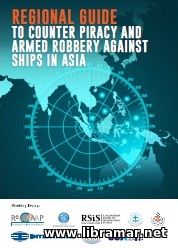 The present Guide was released to deal with the armed robbery against ship operating in the Asian region; it's content was prepared by ReCAAP ISC in co-operation with the ASF, IFC, OCIMF, SSA, IFC and INTERTANKO trying to provide required assistance to the ship owners and masters, crew members and ship agents, as well as all other people considered responsible for the safe operation of the vessel.
The book starts with the chapter describing the historical development of the co-operation in the Black Sea region. The rest of the chapter are devoted to the state of the Black Sea, it's marine biological diversity, governance of the sustainable fisheries in the subject region, vessel source pollution plus various offshore activities taking place in the Black Sea, and many other important aspects.
In short, the publication provides all necessary information covering the subject and may be recommended to the governmental authority officers, state inspectors, ship owners and all other persons engaged in the shipping activities in this region.
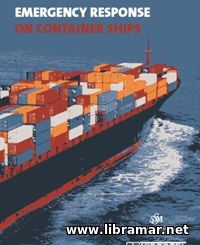 This training program was developed by Videotel, the leading provider of the professional marine training, and is principally intended to be used by ship crew members; however, its content will also be useful by the ship superintendents and other people working offshore, since it is setting out the roles of the persons engaged in handling the emergencies on board vessels, including those working ashore, together with their responsibilities.
The present training booklet includes significantly expanded information on each of the covered topics; note that there will be short assessment test at the end of each chapter to track your training progress. The main content of the book covers such important aspects of the emergency response as planning and preparation activities, action plan and first response to the emergency, shore support, monitoring and review, etc.
There are several real case studies included in the book and thoroughly analyzed. The reference section contains guidance and legislation sources, list of the websites and publications and other supplementary info. We recommend to use this training video as a supplement to get the best outcome of the training program.
 This is the first part of the Entry into Enclosed Spaces training by Videotel. The training course covers the overview of the enclosed spaces and associated hazards, managing the entry to the enclosed spaces, some exercises, resources, and a number of assessment questions with answers.
This part of the safety training course has been specifically devoted to the Awareness and is actually intended to make the readers duly understand what the confined/enclosed spaces are and get to know the real hazards of entering such spaces, recognize the enclosed spaces on their vessels and know when it might appear necessary to enter, gain some necessary awareness of the safeguards etc.
One cannot overestimate the importance of having a clear understanding of all these aspects as they may eventually save a human life which is priceless and well worth spending come time reading the relevant safety documents and watching videos.
For example, the present training booklet is best when supplemented by this video film for better understanding - this one will be perfect for the people relatively new to the industry and willing to get some visual training in addition to the information obtained from the books.
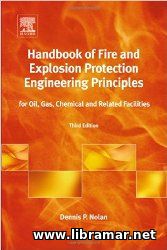 The author of this third release of the world popular volume have declared its main objective as providing the industry with the expanded and updated information about the current practices of process safety management as well as significant technical engineering improvements which occurred since the time of the original publication of this handbook.
In the meantime, the main goal remains unchanged - it is to provide people with a thorough understanding of all fire and explosion dangers at various facilities of the oil and gas industry and in fact any others; this volume should be used as a very practical source of general reference material for all people facing fire protection issues that can be practically applied; it shall also serve as a reminder for the identification of unexpected hazards commonly existing at a facility.
It is definitely a must have reference guideline for those individuals who are involved with fire/explosion protection and prevention. What is very important, the author is presenting valuable insights into the protection principles philosophy, making it easier for the people to understand where they are actually originating from. All important aspects have been covered including fire/explosion-resistant systems, alarm and detection systems, effective fire suppression methods etc.
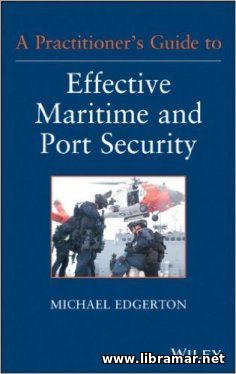 This book was written to analyze the set of factors that affect the security of maritime and port operations, including shipping, economics, politics, crime and terrorism. The author of the publication critiques current approaches to the security based on his practical experience of more that twenty-five years in the field.
His intention is to provide readers with a set of tested and proven security recommendation that would recognize the interests and role of both private sector and government in improving security. The fundamental components of the international maritime shipping industry have all been thoroughly analyzed in this book and all potential threats to ports have been assessed.
The author examined approached to the port security in the US, EU and around the planet, and presented the underlying principles for effective port and maritime security. We would recommend this publication to anyone whose current or future profession required thorough knowledge of all aspects of maritime and port security since they will find all necessary information in a single volume, very well organized.
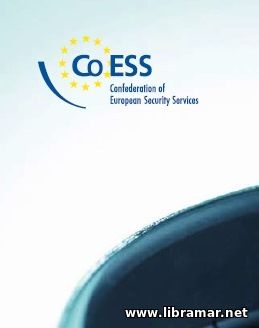 The content of this document reflects the results of the combined efforts by the parties of the COESS Working Committee Maritime Security which took place in 2008. The mainly covered areas are the ISPS Code and associated legislation including the IMO, SOLAS Convention, other legislation, electronic security equipment including the emergency centre, interior/exterior security systems, metal detectors, scanners, alarm/warning systems, advantages and disadvantages of different electronic means, communication, detection systems etc., checking persons, suppliers and visitors, body-searching, announced/unannounced visitors, competencies of the officers etc., security plan covering its drafting, cargo handling, corporate policy, company rules and regulations, ship stores and delivery, PFSP, inventory of risks that are induced by crime etc., ID documents including forgeries, driving licenses, passports, distractions and evasive actions etc., recognition of weapon, communication issues, dealing with aggression, and dangerous commodities - here the dangerous goods are explained together with all applicable regulations for their safe transportation and handling.
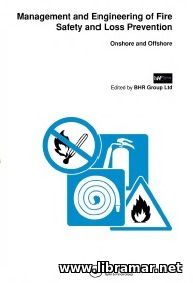 This is a good compilation of the interesting documents dealing with the general techniques and methods that could be applied to the specific engineering and fire safety cases. The circumstances that have been described in the pages of this publication include many plant applications in the oil production industry.
The volume is expected to be of great practical use for the petroleum engineers, fire engineers and legislators. Obviously, it is very important to know how to perform the modeling of the potential consequences of the various hydrocarbon accidents offshore, and this is a topic of the first document in this collection.
The authors are making an attempt to estimate the magnitude of the commonly made errors in risk analysis using the special example of the structural collapse resulted from the hydrocarbon fires. They have identified the areas likely to generate the errors, based on the currently possessed information and knowledge. Proper application of the technical expertise spanning different disciplines may eventually lead to the reduction of those errors.
« 1 2 ... 5 6 7 8 9 10 11 » |







